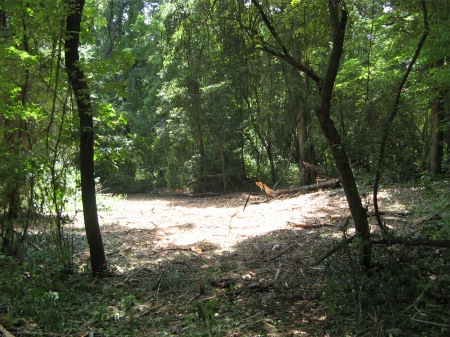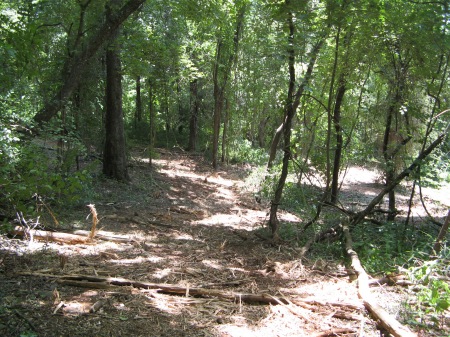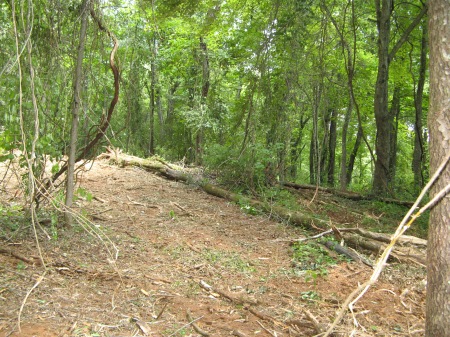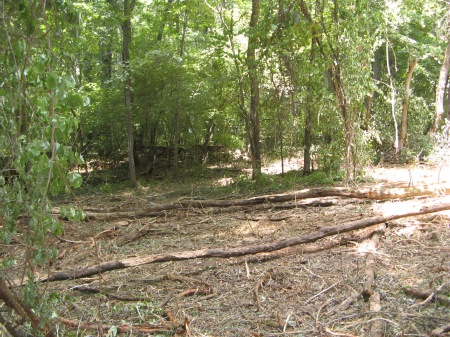The House Site
Before I closed on the purchase of my property in February, 2008, I hired Jeff Walker, a soil engineer, to verify that I would be able to obtain a septic tank permit. He did so, and specified an area where the drain field and house site should be. At the time he performed his work, we were uncertain of the exact location of the boundary line and after the boundary line was surveyed by Chris Pappas of Green Forests Surveys in Blacksburg (whom Jeff recommended), I came to the conclusion that the house site was a tad too close to the property line for my comfort. My neighbor plans to build a “get away” cabin on her property and I’d just as soon have a few hundred feet of room between her little place and my little place! I paid dearly for not following Jeff’s advice regarding the construction of my driveway and I hope that changing the site for my house will not prove equally disastrous. But there really aren’t many good house sites on the property and I think I can make this site work. My decision is not set in stone, but I’m pretty confident that the site I picked will be quite satisfactory. Jeff has become a good friend and you’ll not find a more honest contractor in Floyd County.
I had John Sutherland’s son, J.R., clear some rough swaths of ground in the general vicinity of where I think the house might be located:




As you can see, the Bull Hog does chew up the woods pretty effectively. The long logs lying on the ground are Black Locust which were probably felled by Hurricane Hugo when it spun through Floyd County in 1989. It is hard to see in the last picture, but there is a good-sized pile of rocks in the center background. Here is a closer view of the rocks:

The rocks were obviously placed there by humans, but I don’t know when that happened. I talked to Terry Thompson, a Realtor in Floyd, for whose family Thompson Road is named. He told me that his father, who is now 80, remembers when my property was the site of the baseball field for the Check and Floyd teams. I’m guessing that that would have been in the mid-1940s, so perhaps this pile of rocks is related to that time. After J.R. was finished with his Bull Hog work, he and I walked around a bit and we discovered an apple tree not too far from this pile of rocks. I subsequently discovered another apple tree not too far away from the first one and it was of the same variety, though I do not know what kind it is. The apples are too small at this time to make that determination, at least for me. I learned from June Damanti’s experience that apple trees are not self-pollinating and that they require a different variety of apple tree for the flowers to be fertilized. Perhaps that means that more apple trees are hiding amongst the multiflora rose thickets and oriental bittersweet vines? Who knows? I didn’t see any evidence of the remains of a house foundation in this area, but the vines and stickweed or wingstem are so thick that I will wait until winter to investigate further. In the meantime, perhaps I will contact the folks at the Floyd County History Society to see if I can learn more about the history of the property.

Finally, a look at it! Hard to imagine that baseball might once have been played there.